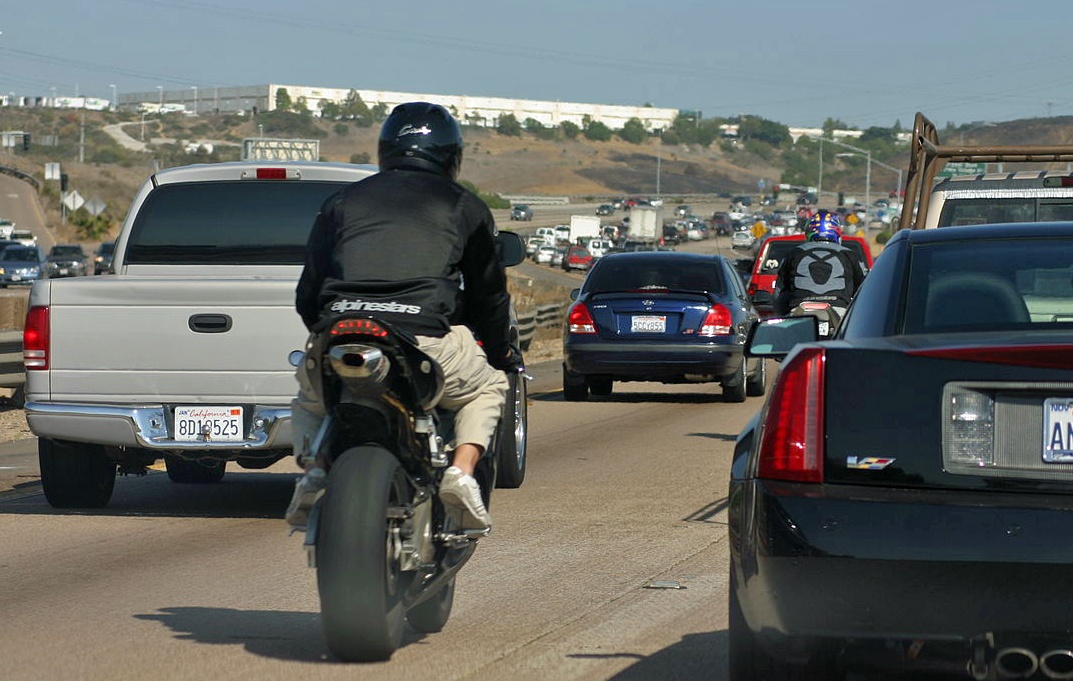Riding a motorcycle gives you a sense of freedom and adventure. Having the wind blow through your hair while listening to the sound of your engine rev up as you climb that Oregon mountain pass makes you feel unrestrained and bold. But wait just a minute. While a romantic idea, getting to the point of being able to actually firing up your metal steed requires knowing and adhering to few rules. Enter the Oregon motorcycle law. So here’s what you need to know:
Oregon Motorcycle Laws Every Rider Needs to Know

Do You Need a Motorcycle License in Oregon?
A motorcycle endorsement (also sometimes called permit or license) is required to operate a motorcycle in Oregon. Although riding without one is a traffic violation with a presumptive fine of $440, Oregon law requires the court to suspend the fine if you take a motorcycle education course and obtain a permit within 120 days of getting the ticket.
How Do You Get a Motorcycle Endorsement / Permit?
To get a motorcycle endorsement you must:
- Have a valid driver’s license
- Pass a motorcycle knowledge test and vision test
- Successfully complete a motorcycle education course
More info is here: ODOT Motorcycle Instruction Permit & Endorsement
Does Oregon Motorcycle Helmet Law Require You to Wear One?
Well, yes. Only three US States (Illinois, Iowa and New Hampshire) don’t have a helmet requirement.. Everyone else – including Oregon – requires motorcycle riders to wear helmets. Failing to wear one will get you a traffic ticket with a fine of $115.

Can Motorcycles Ride on the Shoulder in Oregon?
No, they cannot. According to the Oregon Motorcycle Manual (Page 30) it is illegal to use the shoulder to go around another vehicle.
The actual law is less clear. It states that it is illegal to pass on the right if you drive off the paved portion of the highway to do so. However, the law also defines a shoulder as a portion of the highway, whether it is paved or unpaved. Thus it would seem that a motorcycle could drive onto a paved shoulder area to pass on the right but could not if the shoulder was not paved.
The fine for illegal passing on the right is $265.
Is Lane Splitting Legal in Oregon?
No – but the Oregon legislature has previously considered changing the law.
What is lane splitting? For the uninitiated, it means riding a motorcycle between car lanes. While a common occurrence in California (the only state to allow it today), lane splitting will get you a traffic ticket in Oregon.
In 2019, a bill was presented to the Oregon legislature to allow lane splitting. It was not passed by the Legislature.

Can Motorcycles Run Red Traffic Lights?
Yes – but only under certain circumstances.
Oregon motorcycle law says that they can proceed through a red traffic light controlled by a vehicle sensor. However – only if the motorcycle comes to a stop and the sensor does not detect the motorcycle after one full cycle of the light.
Is Motorcycle Insurance Required in Oregon?
You guessed it – the answer is of course YES. Oregon law indeed requires motorcycles to be insured. The policy must provide liability coverage of $25,000 per person injured and $50,000 total, plus $20,000 for property damage.
Oregon law does not require motorcycles to have personal injury protection insurance – but I strongly recommend you to consider insurance with liability and uninsured coverage of $100,000 per person and $250,000 total, plus $100,000 in personal injury protection insurance. This insurance umbrella will best cover you if you are hit by an uninsured driver.
Are There Any Age Restrictions for Dirt Bike Riders in Oregon?
You bet there are! Oregon motorcycle law says you must be at least 7 years old to ride a dirt bike on its public land. If you are under 16, you must have a class III ATV operator permit and be accompanied by someone who is at least 18 years old and has an ATV operator permit too.
If you are under 16, you can get a class III ATV operator permit by taking an online III ATV safety education course and attending for hands-on training.

What Should You Do If You Get Hurt in a Motorcycle Accident in Oregon?
If you are injured in a motorcycle accident, seek immediate medical attention. Either you, a family member, or a friend should photograph the accident scene as well as your bike.
Have your medical providers bill your motorcycle insurer if you had personal injury protection insurance coverage. You will need to contact your insurance agent to set up a claim with your insurer. If you do not have personal injury protection coverage, you should have your providers bill your health insurer. In any case – be careful about speaking with the other driver’s insurance company as they are just trying to protect their insured.
If you want more information, read our in-depth guide about what to do after a motorcycle accident.
Got more questions? Contact an experienced personal injury attorney as soon as possible to assist you.